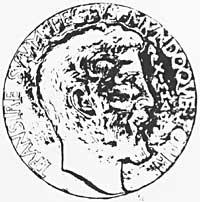“…and the Nobel goes to…”
1997/12/01 ZETIAZ - Elhuyar Iturria: Elhuyar aldizkaria
Nobel Prize in Physics
Atom Hunting System
At this time we have been told that the work done by the new Nobel Prize in Physics has no practical use, but in a few years we will see the results of this theoretical work. In the development of atomic clocks, the work done by the three researchers must be taken into account.
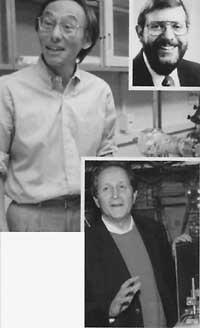
The research of atoms has been fundamental in the development of modern science; quantum theory itself, to a large extent, has been understood for years as the theory of the atom; obviously, the arrival of this interesting field has not yet been exhausted. Or. Scientist Stern's work with the bundles of atoms throughout the 1920s can be considered as a starting point for the line we now analyze, as it has been based on his research to later introduce hundreds of scientists into the occult world of atoms.
Under normal environmental conditions, atoms and molecules move zigzag in all directions and at different speeds. The “frenetic” movement is intimately related to the temperature of matter; the higher the temperature, the faster the movement of atoms. In this situation you cannot see anything or, what we care about, you cannot investigate anything correctly, that is, to know the properties of atoms you need a more “quiet” environment. This environment is achieved very close to absolute zero, that is, at very low temperatures. However, when atoms reach these temperatures they have a bad habit: they condense and become liquid or solid.
To avoid condensation, it is necessary to keep the atoms separate, manipulating them in very low densities and in vacuum under the influence of electric or magnetic fields. This area is “captured” in vacuum and therefore has the same function as a vessel, so this area is called an atomic trap. Once atoms are “trapped” in them, you have to keep them at very low temperatures if you don’t want them to come back. Researchers Chou, Cohen-Tannoudji and Phillips have developed procedures for cooling and capturing mischievous atoms using laser light and multiple atomic traps.
Nobel Prize in Chemistry
Energy Cookies
As in many other occasions, this year's Prize has recognized the work done by the winners over the years, as well as the terrain traditionally considered incipient in Biochemistry, Bioenergetics, has entered with all honors in the Nobel Prize club after this year. As is known, bioenergy deals with energy transmissions that occur in biological systems. In 1978, scientist Peter Mitchell also won the Nobel Prize for his work in this field. In particular, Mitchell provided a theoretical model to understand the synthesis and use of ATP (adenin trifosato) in living beings. Although we have not said so far, the prudent reader will already know: ATP is a universal molecule that collects energy and transfers it to multiple processes.
The exciting journey of energy
Living beings consume energy constantly. While reading the magazine, your body needs energy to pass pages. We generate a constant expenditure on the body, but it seems – with exceptions – that this source is not exhausted, that we always have reserves of energy. Over the years, scientists have worked hard to clarify the functioning of these mechanisms and after many sorrows and misfortunes, the response that finally came in 1929 when chemist Karl Lohmann discovered that year the energy molecule, ATP. This molecule considered that it had an important role in the transmission of energy of living beings, but it was not fully clarified until 1939-41, when scientist Fritz Lipmann, Nobel Prize in Medicine in 1953, postulated that ATP is a basic structure of energy transport. Scientists continued to work in the following decade to clarify its structure and in 1948 the Nobel Prize-winning chemist Alexander Todd succeeded in synthesizing the molecule.
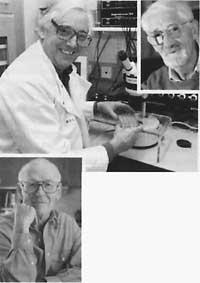
The process of ATP synthesis is fascinating. As mentioned above, it participates in any process that requires energy. Take, for example, breathing. Breathing is done in an internal part of the cell, the mitochondria that functions as a power plant. The inner membrane of the mitochondria contains the four enzymes that form the respiratory chain, in which sugars and fats are oxidized by electron exchange.
This transfer is accompanied by the expulsion of protons from the mitochondria, which generates a proton gradient that can then be used for the work. Its main function is to synthesize ATP, so the cell needs the protons ATPase. Therefore, the center of the bionergetic is nothing more than a small electrical circuit: the respiratory chain bombards the protons with the energy obtained by burning the roots; the protons return to the cell through the ATPase and the energy released in this process generates ATP.
The energy accumulated within the ATP structure will be used by the living being in multiple processes. Boyer and Walker already knew of all this, since the ATP mechanism has long been known, but there were still many doubts that had not been clarified, among which the winners of this year have responded: By what mechanism does energy from the proton gradient affect ATP synthesis? Both researchers have clarified the structure and mechanisms of proton ATPase and have therefore taught us the processes of energy generation and transport.
Nobel Prize in Medicine
Prusiner and Priones
The 1997 Nobel Prize in Medicine was awarded by Stanley Prusiner for his work in disseminating the knowledge of prions since 1982. But what are prions? It is a term invented by Prusiner itself and that corresponds to infectious protein particles that seem to participate in the transmission of “transmissible spongiform encephalopathies” (EST). The main features of these diseases are slow central nervous system infections, which are ultimately lethal. They cause a progressive degeneration of the gray substance and the appearance of vacuoles in the brain tissue, adopting a herbose appearance.
The name EST includes several diseases that affect different species of mammals. The most outstanding are the “scrapie” of sheep, which can only be infected by sharing the meadow; the bovine spongigorea encephalopathy (BSE), known as “mad cows” and the disease of the tribogaviota “Stäs-Familia”, known as “Historic Episode of the Sänäs-Cherry Family.
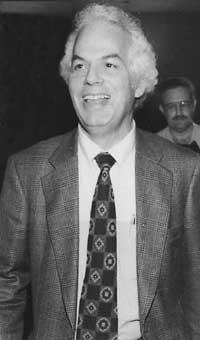
According to Prusiner, the infectious agent of EST pathologies is a protein capable of producing multiple copies of itself, that is, a special characteristic of the group of diseases. This theory has provoked intense debate, since among scientists it is recognized that they are nucleic acids and not proteins, carriers of genetic information and ability to replicate. Prusiner's theory, therefore, being heterodox, has had since its inception many opposites that, although less and less, consider that the infectious agent of EST diseases is a virus.
But how can a protein produce disease? Prusiner, in 1982, analyzed the infectious fraction of the brain contaminated with scrapie and discovered that its main component was a protein, called “PrP”. Three years later, the Prusiner team discovered the gene that produces this protein, both in hamsters and healthy mice. The amino acid sequence of the normal PrP protein (PrP c), compared to that of the pathological protein PrP (PrP sc), showed that both sequences are totally identitary but with a different three-dimensional structure.
In fact, in the same parts of the chain where the protein PrP c has long folds of type a-helice, the PrP sc organizes the leaves b. In addition, PrP sc, unlike normal PrP c protein, tends to form insoluble aggregates and fibers in the brain, resistant to protein attack.
The numerous subsequent trials agree that, compared to the protein PrP sc, PrP c modifies its structure by becoming the protein PrP sc. Some research groups, including Prusiner, claim that structural modification of the PrP c protein may require other proteins, such as Txaperon. On the contrary, opponents of prion theory suggest that such structural change may be due to the interaction of the protein itself throughout the life cycle of a virus. However, many questions remain unanswered, among the most elementary are, for example, what may be the function of the protein PrP c in the cell, the cause of the folds make lethal this protein, or how the structure changes.
The BSE appeared in UK cows has created new expectations amid this scientific debate on the molecular characteristics of the infectious agent, as well as a huge social alarm.
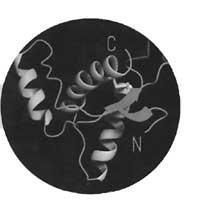
It seems that the disease of cattle spreads in an epidemic way and breaks with the usual barrier of the species: tigers, pumas, ozelotes and cheetahs raised in zoos with infected beef, are infected (in the rest of these there is no infection between species). However, can the infection pass from cows to humans? Epidemiological studies suggest that BSE and the presence of a copy of CJD (nvCJD) are related in humans. In fact, according to the new works by two independent research groups (Nature, 2 October 1997), the nvecj is produced by the agent responsible for the bovine SSE.
To date, 21 nvECJ cases have been confirmed in the UK and in the PrP gene they present a common characteristic, although the importance of this event is currently unknown. We still do not know the incubation time of DFS in humans, nor the minimum dose necessary to infect our species. We hope that these questions can be answered in the near future and that, through a deeper knowledge of the functioning of the prions, we can avoid their negative impact on the population.
Nobel Prize in Mathematics |





